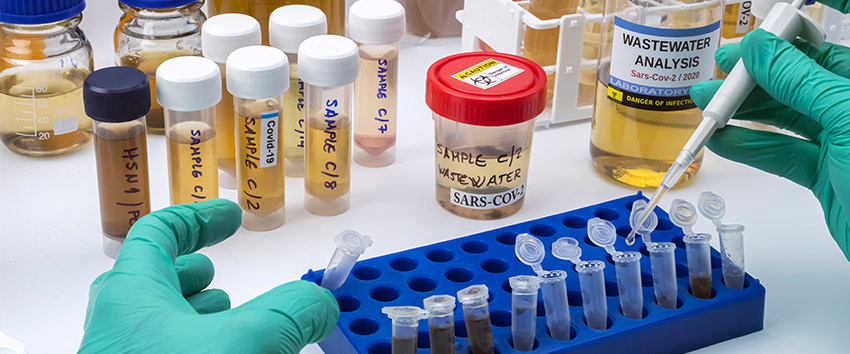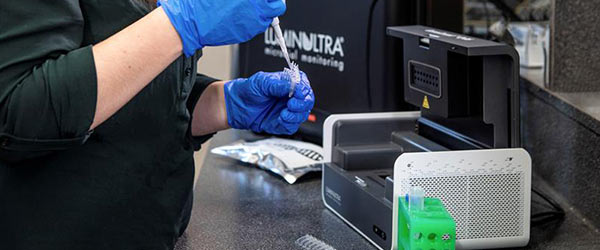The COVID-19 pandemic has devastated economies and taken an extreme human toll with more than 191 million cases resulting in more than 4.1 million deaths worldwide, according to the World Health Organization (WHO).
Though clinical testing has been used most often by public health agencies to identify individuals carrying the virus, wastewater-based epidemiology has proven to be an invaluable tool for early detection of COVID-19 in large or targeted populations.
What is wastewater epidemiology?
Wastewater-based epidemiology involves testing and analyzing wastewater samples to determine the consumption of or exposure to chemical substances (e.g., illicit drugs) or pathogens (e.g., viruses like SARS-CoV-2) within a population. This data can help inform public health decisions by identifying exposure to toxic agents or the prevalence of a disease within a community.
How can wastewater-based epidemiology be used?
The COVID-19 virus is shed in human waste and creates a combined viral load in influent wastewater — water that flows from homes and offices to sewage treatment plants and watersheds. Samples of this influent wastewater are tested for the presence of the SARS-CoV-2 pathogen. This information enables public health to identify areas or communities with infections — even in asymptomatic or presymptomatic carriers.
Identification of early warning signs
With physical symptoms not always present in people with COVID-19, wastewater surveillance can be used to understand the risk in places like communities, college dorms, care homes and industrial sites.
Wastewater testing can identify community risk up to seven days before cases are reported through clinical testing. These rapid, non-invasive insights into the health of large or targeted populations give decision-makers the tools to take action on human testing and contact tracing.
Variant detection
Variants of the virus that causes COVID-19 continue to circulate globally, even as vaccination rates in developed countries rise. Wastewater epidemiology can detect the presence of these SARS-CoV-2 variants in communities.
Variants affect how easily the virus spreads, its severity, and the performance of vaccines, making it crucial that public health officials are aware of their presence. WHO has identified four variants of concern — Alpha, Beta, Gamma and Delta — and continues to monitor and assess the evolution of SARS-CoV-2.
Important insights for public health
While it may be difficult or unachievable to test each individual in a community, measuring their waste can act as an early warning system when new variants appear or in the case of reemergence of the virus. Wastewater epidemiology gives health authorities the tools they need to pinpoint which communities are most affected and to make informed, science-based decisions about next steps, like targeted clinical testing.
What does this look like in practice? The European Commission adopted a recommendation on monitoring COVID-19 and its variants in wastewater in the European Union to support public health decision making. Similarly, in the United States, the Center for Disease Control and Prevention and the Department of Health and Human Services launched a National Wastewater Surveillance System. The data collected will help public health officials understand the viral burden on specific communities and inform public health decisions.
With proven capability to provide early warning of infection, COVID-19 wastewater testing is crucial to continuing to keep populations safe and to identify the presence of new variants.









